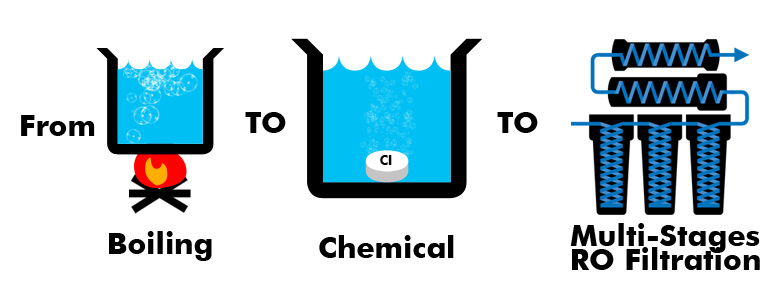
Water purification vs Basic filtration
With the growth of industry comes pollution. With pollution comes contaminated water.
Can the old basic filtration methods still produce the best drinking water? Or, do we need more intense purification methods to combat the modern contaminants in our water supply?
The answer is probably the latter. But let's discuss the traditional filtration methods first. These basic traditional methods can include many options, with the two most prevalent being boiling and chemical. Although effective in ridding water of some things, we will show you that these methods still leaves behind harmful materials in the water.

Traditional Water Filtration Methods
1. Boiling
Historically, boiling is what has been used to disinfect water from microorganisms. In fact, when done correctly, it can kill most bacteria, but not all. Bacteria and protozoa are killed at the first bubble, and it takes about three minutes to kill the rest.
The drawbacks to this filtration method:
- It can require lots of fuel and cooking equipment.
- Water cannot be used immediately, as it needs to cool down.
- Since the boiling water is so hot, some of the water may evaporate before its use.
- The water can still contain particles. So further filtering through a handkerchief could be necessary.
- Finally, boiling water does not eliminate chemical pollutants (including chlorine), poor taste of foul odors, and in fact can leave a stale taste.
Boiling water may be the only method during situations like camping, but in a household, there are more effective and efficient methods available.
Read Next: Water Purification Methods Explained





